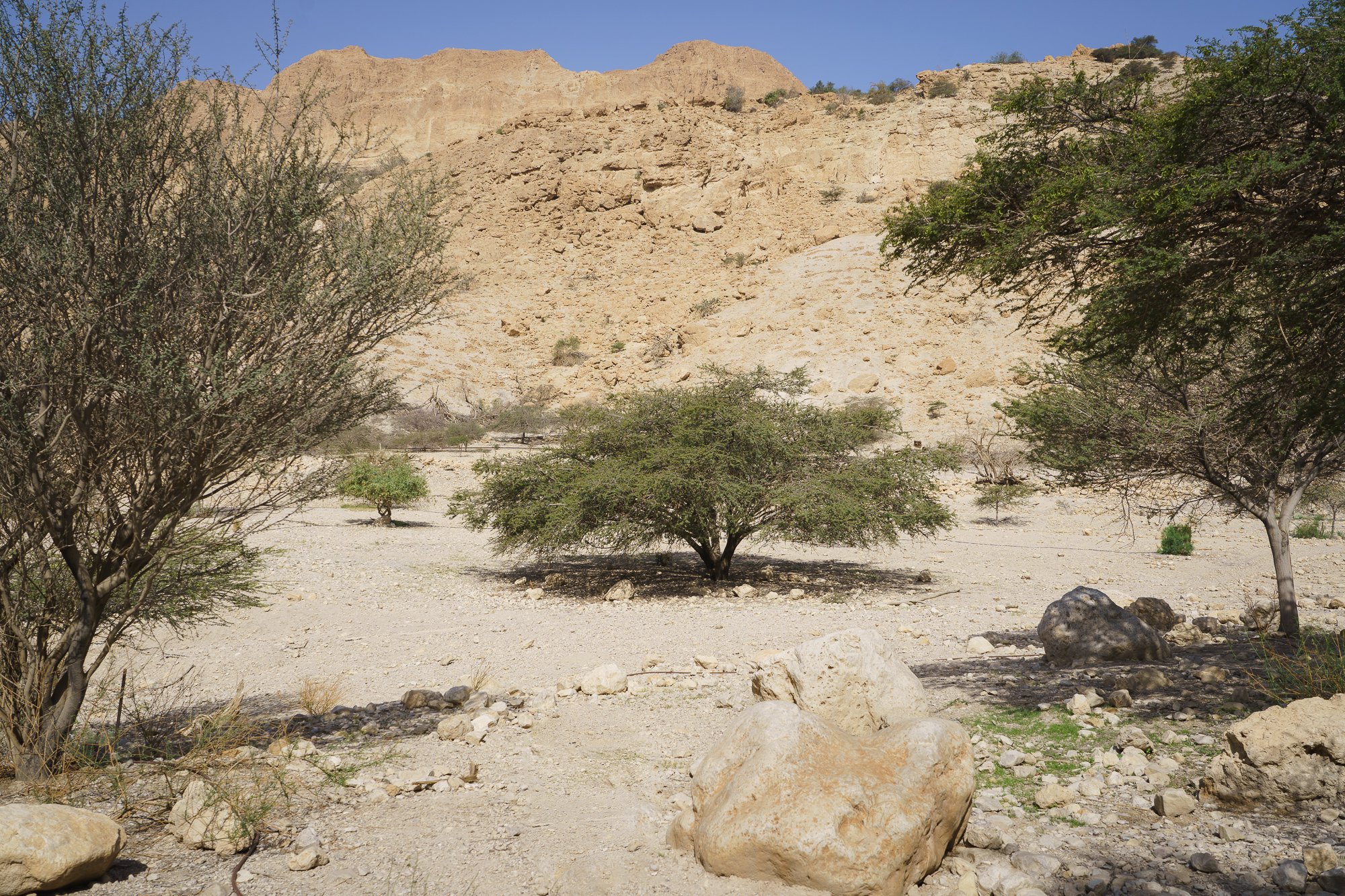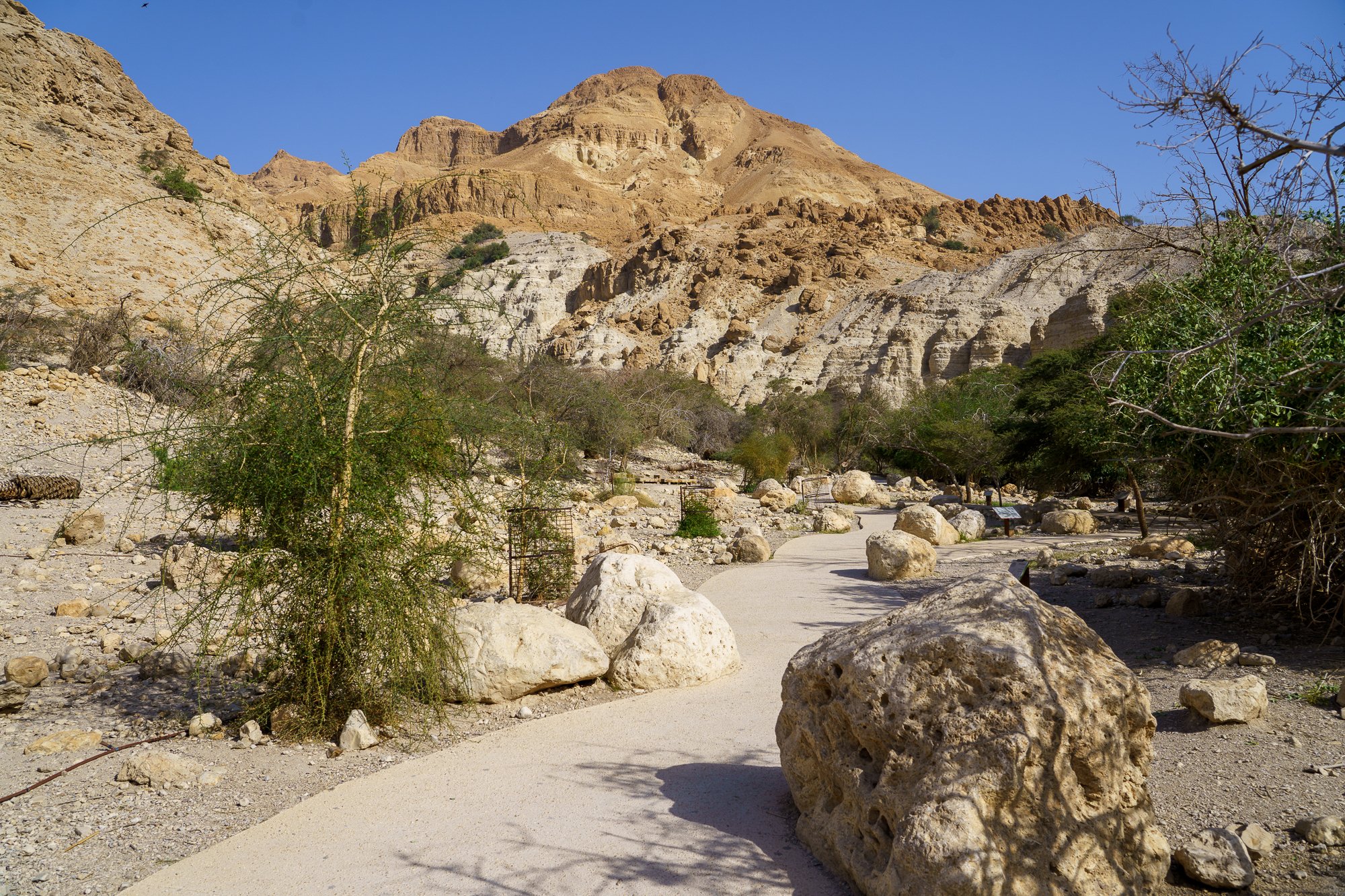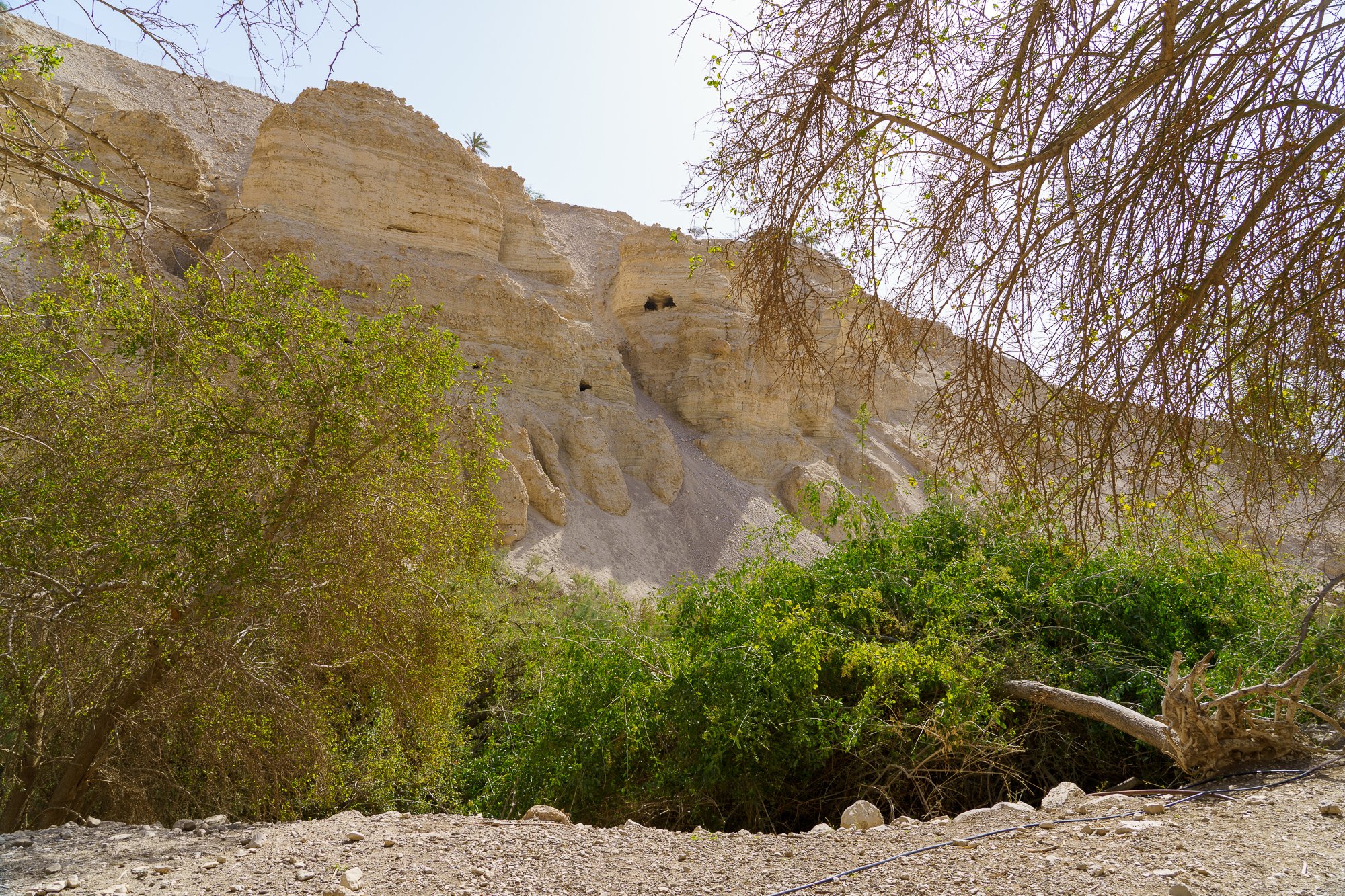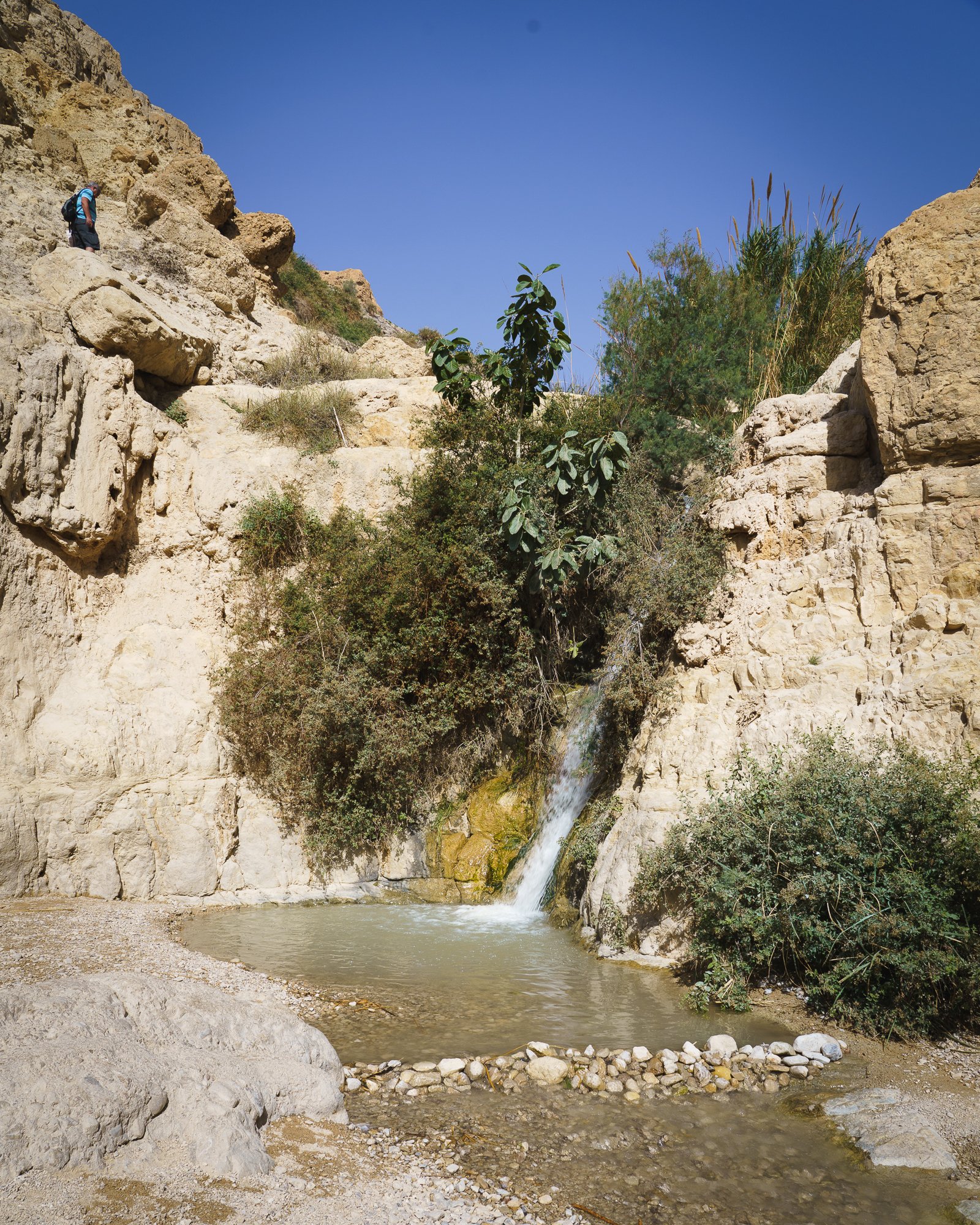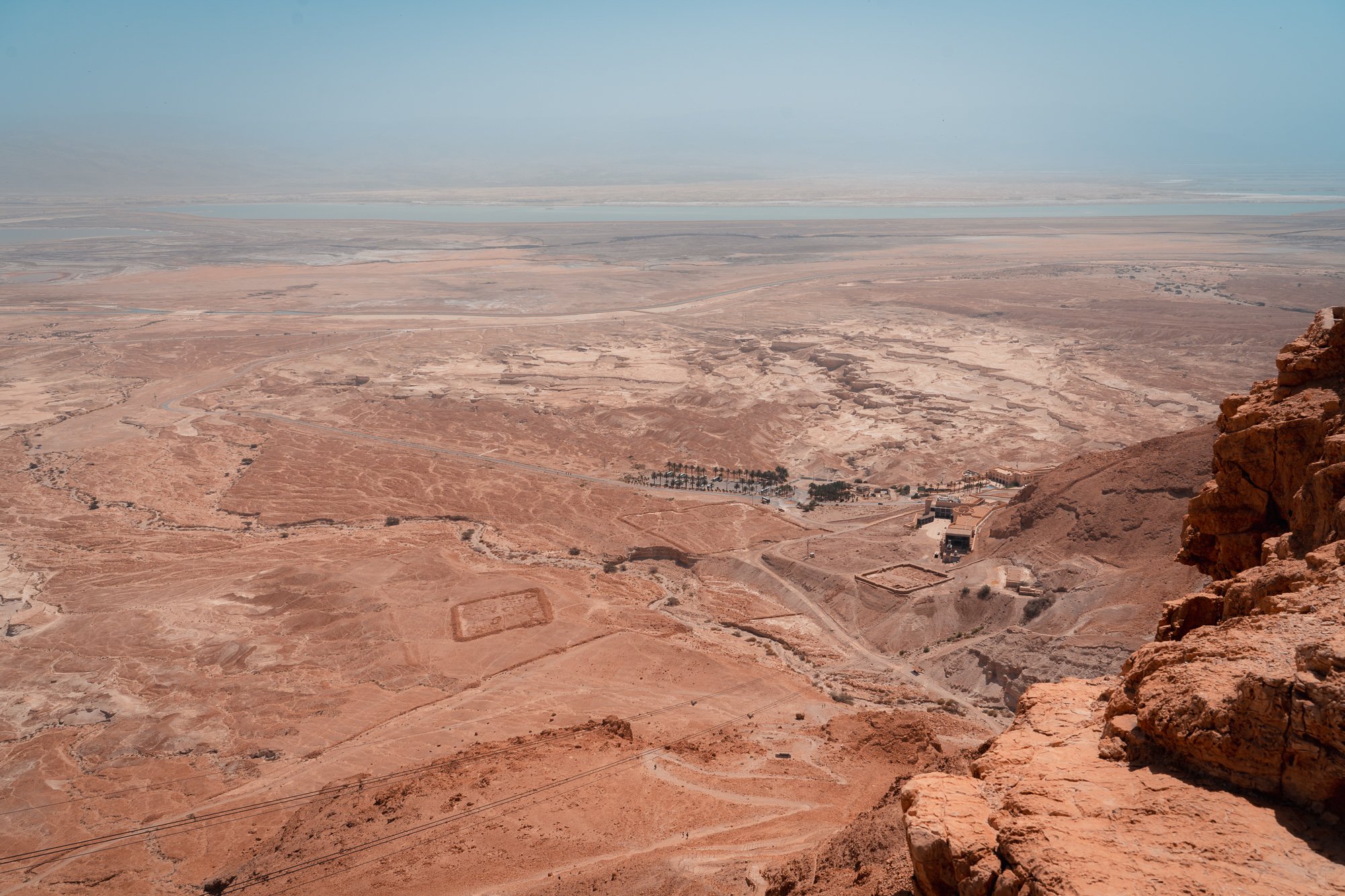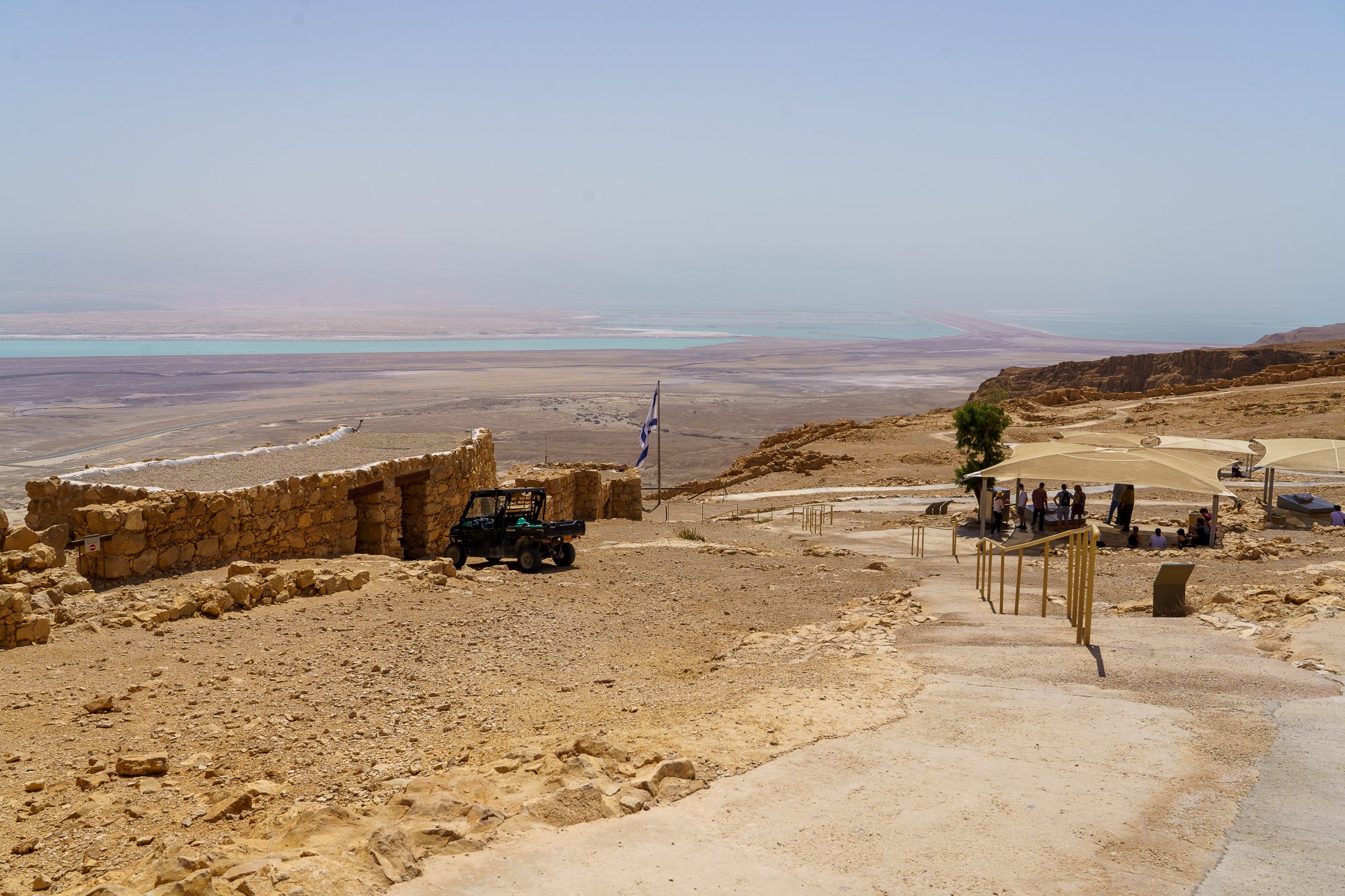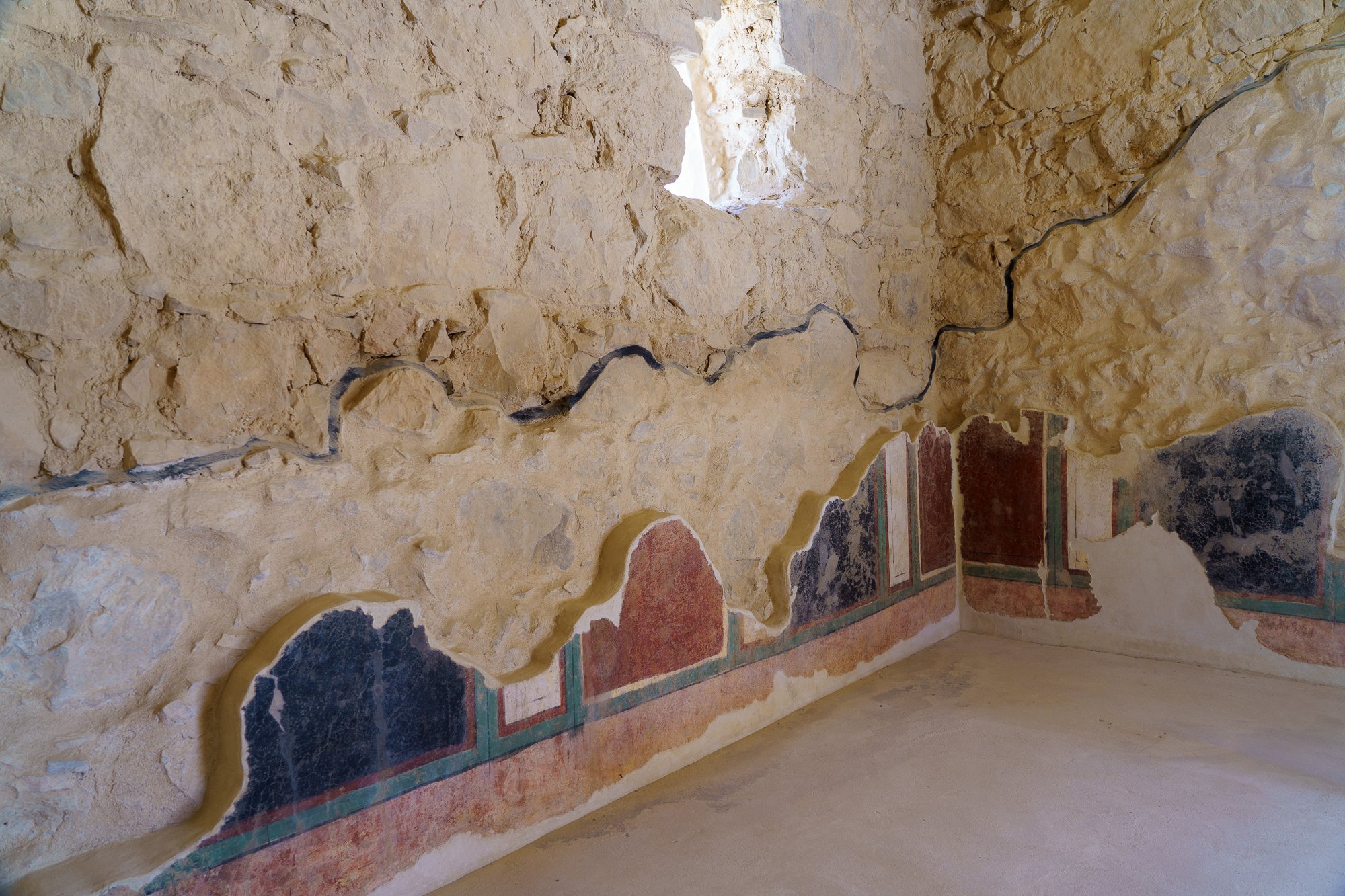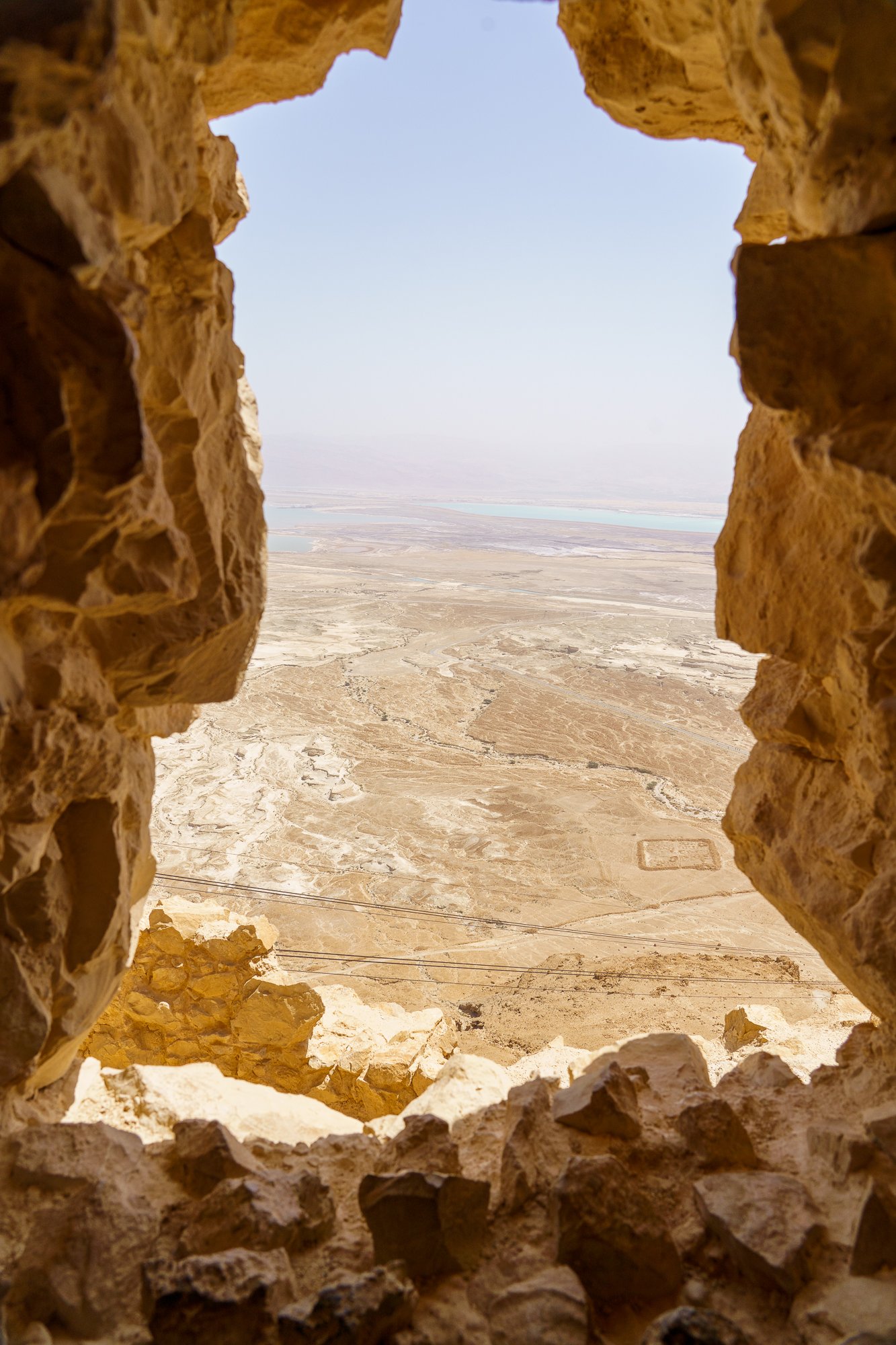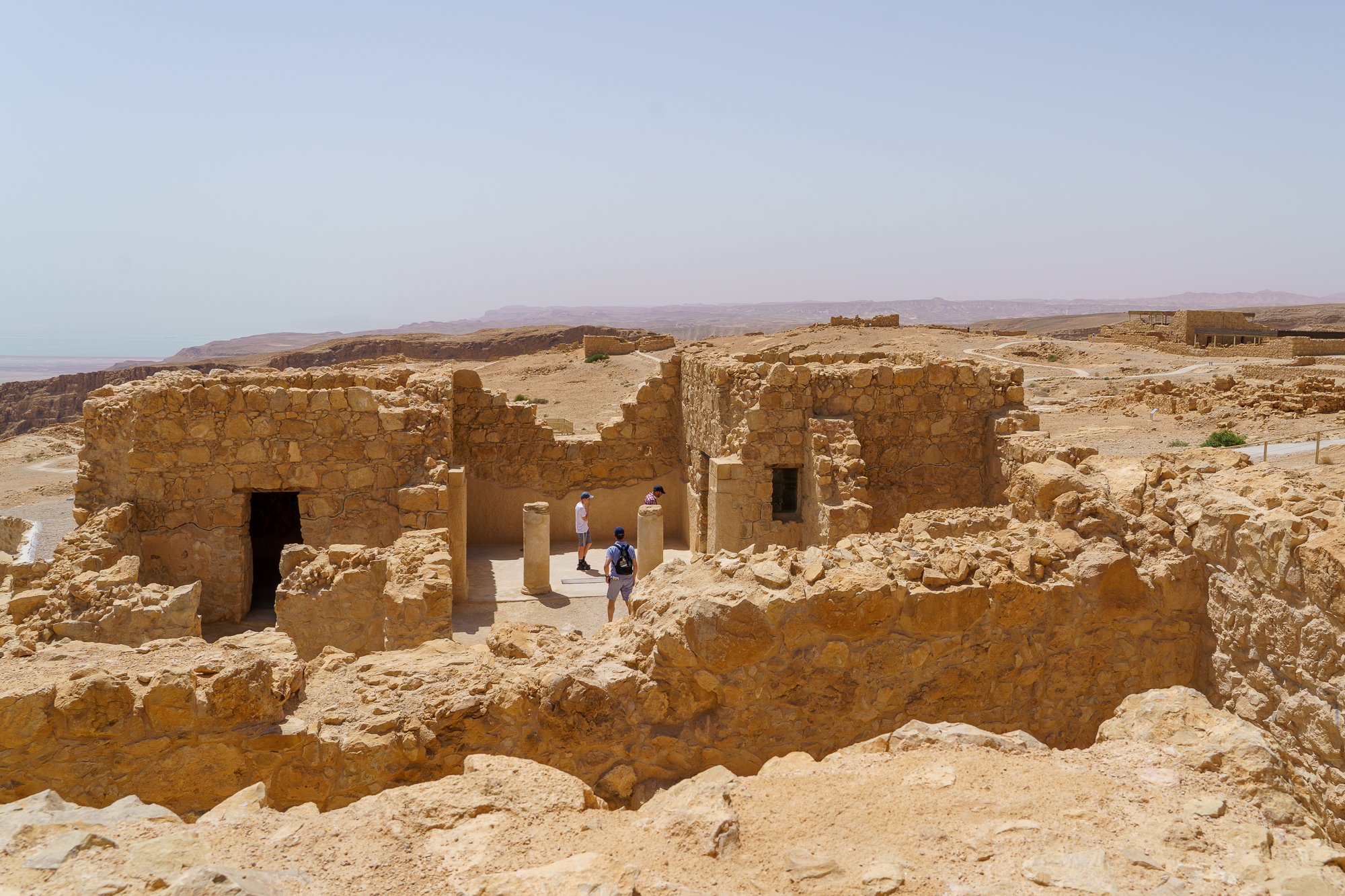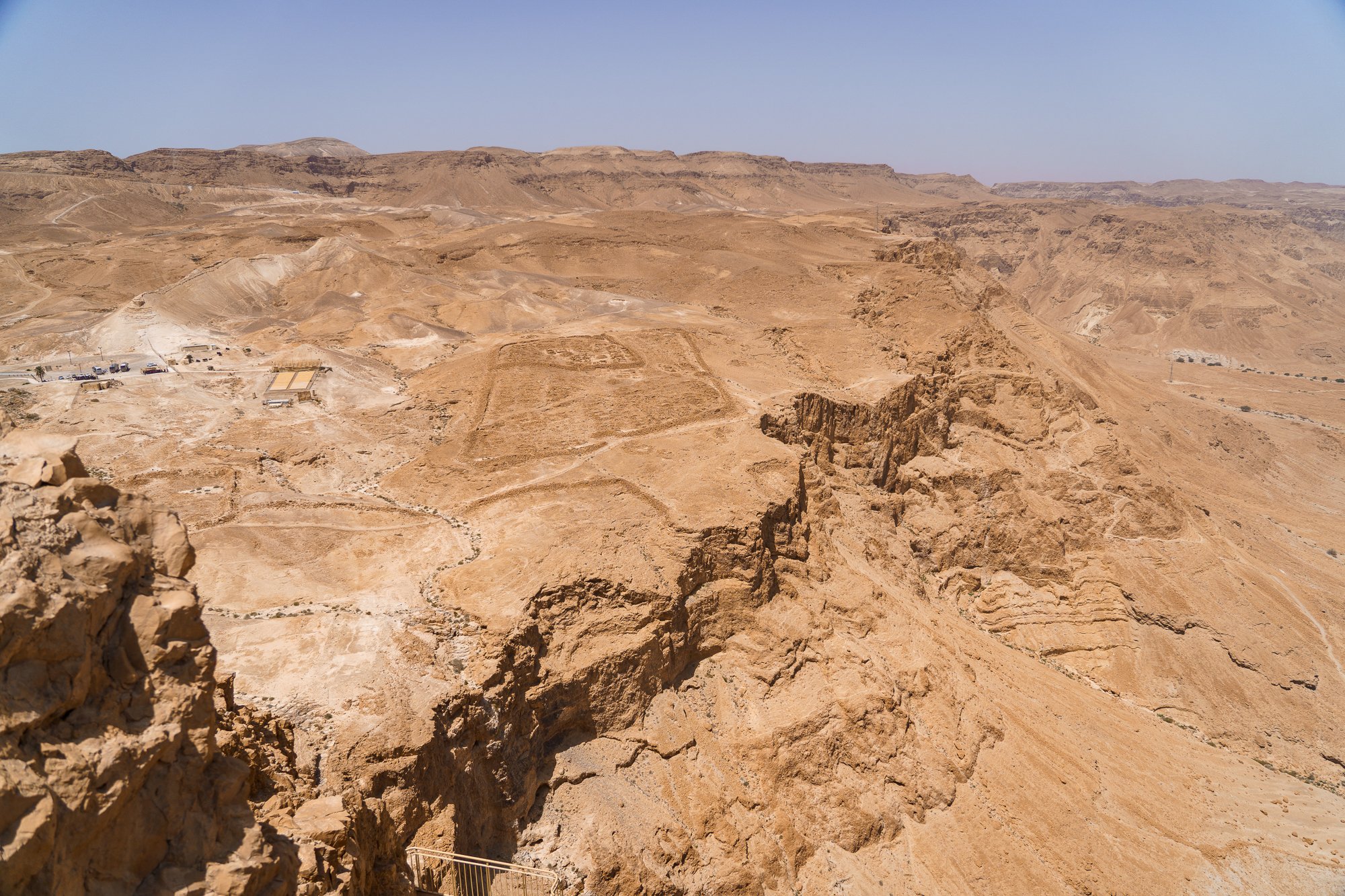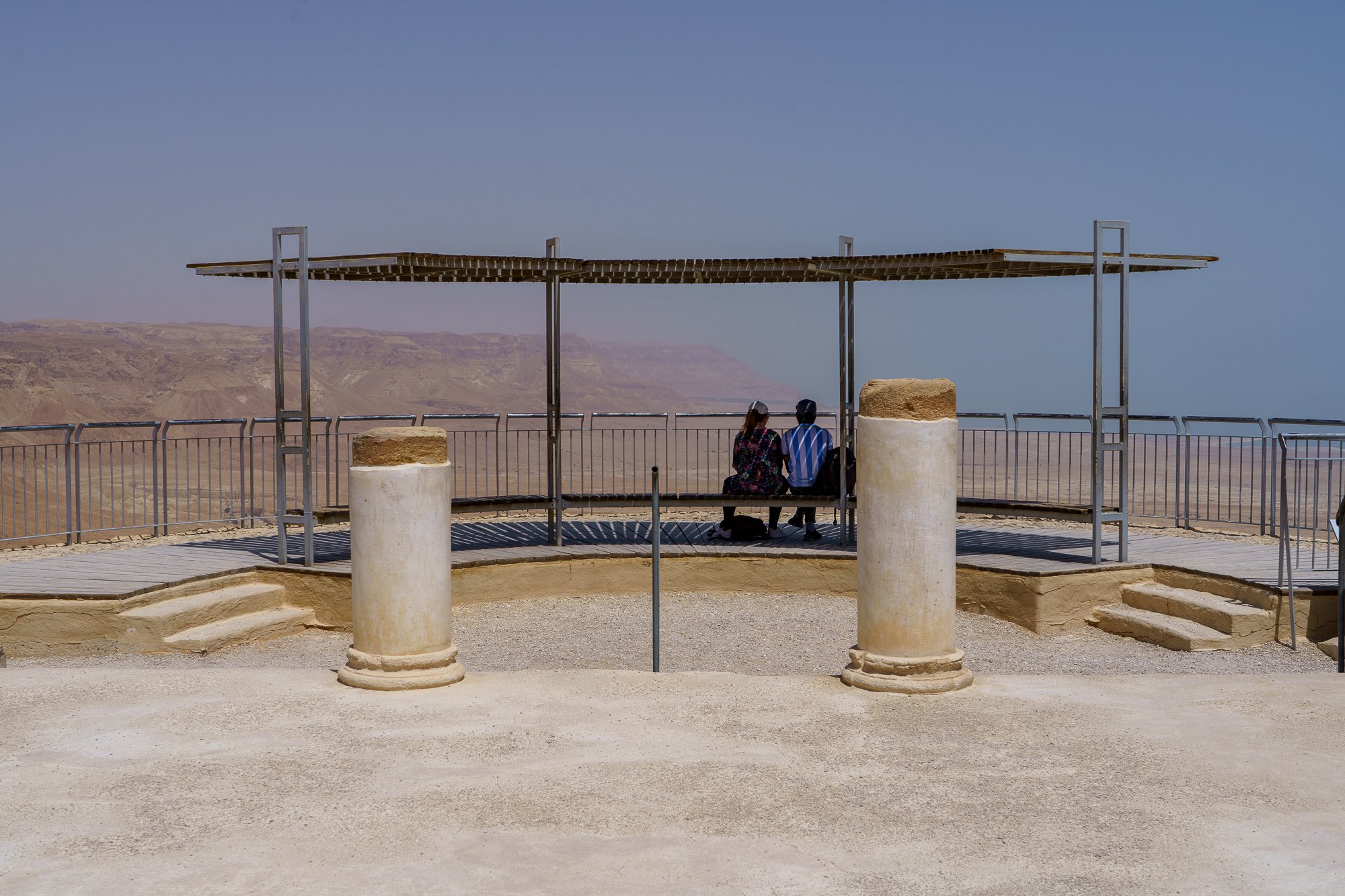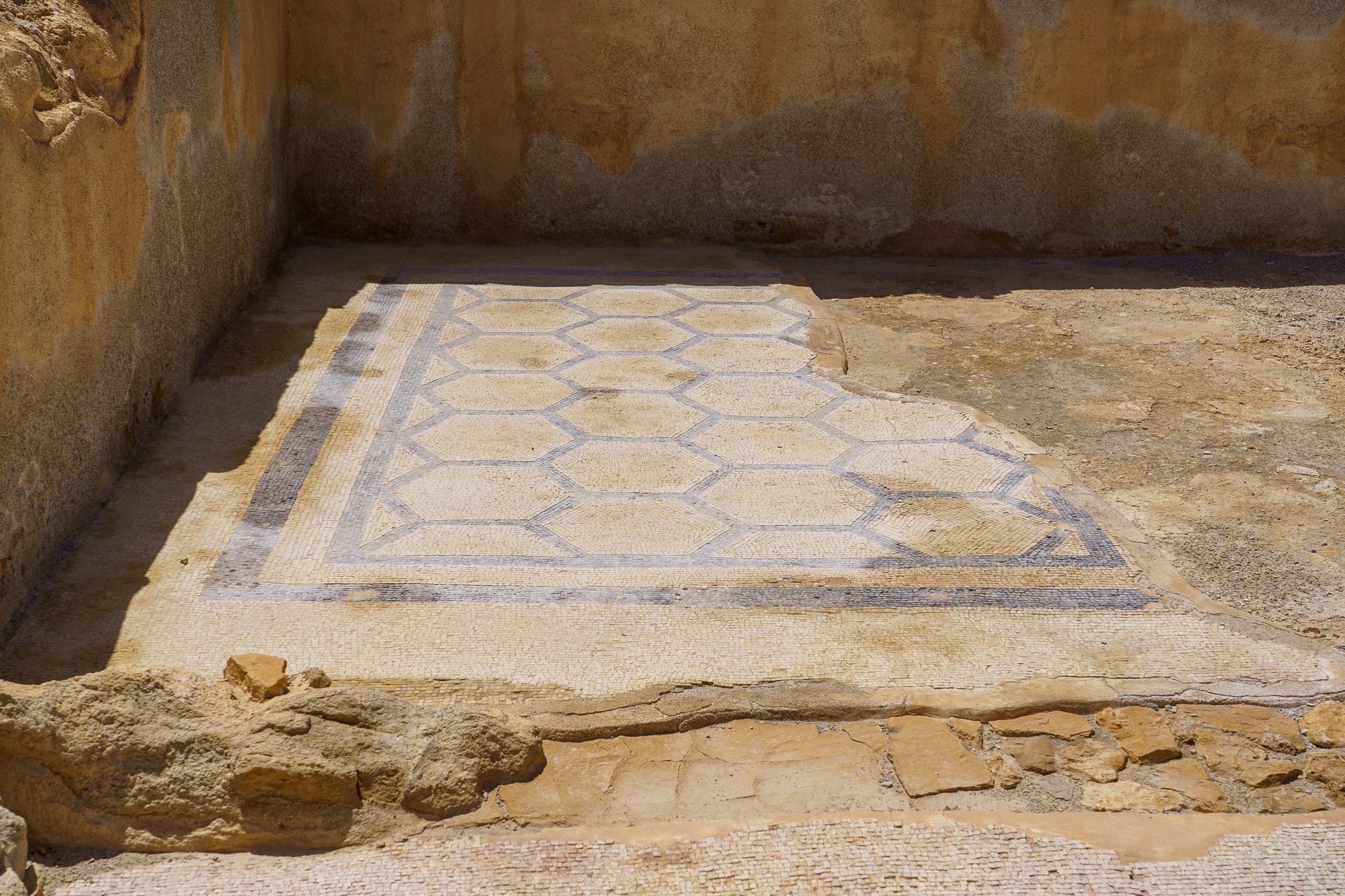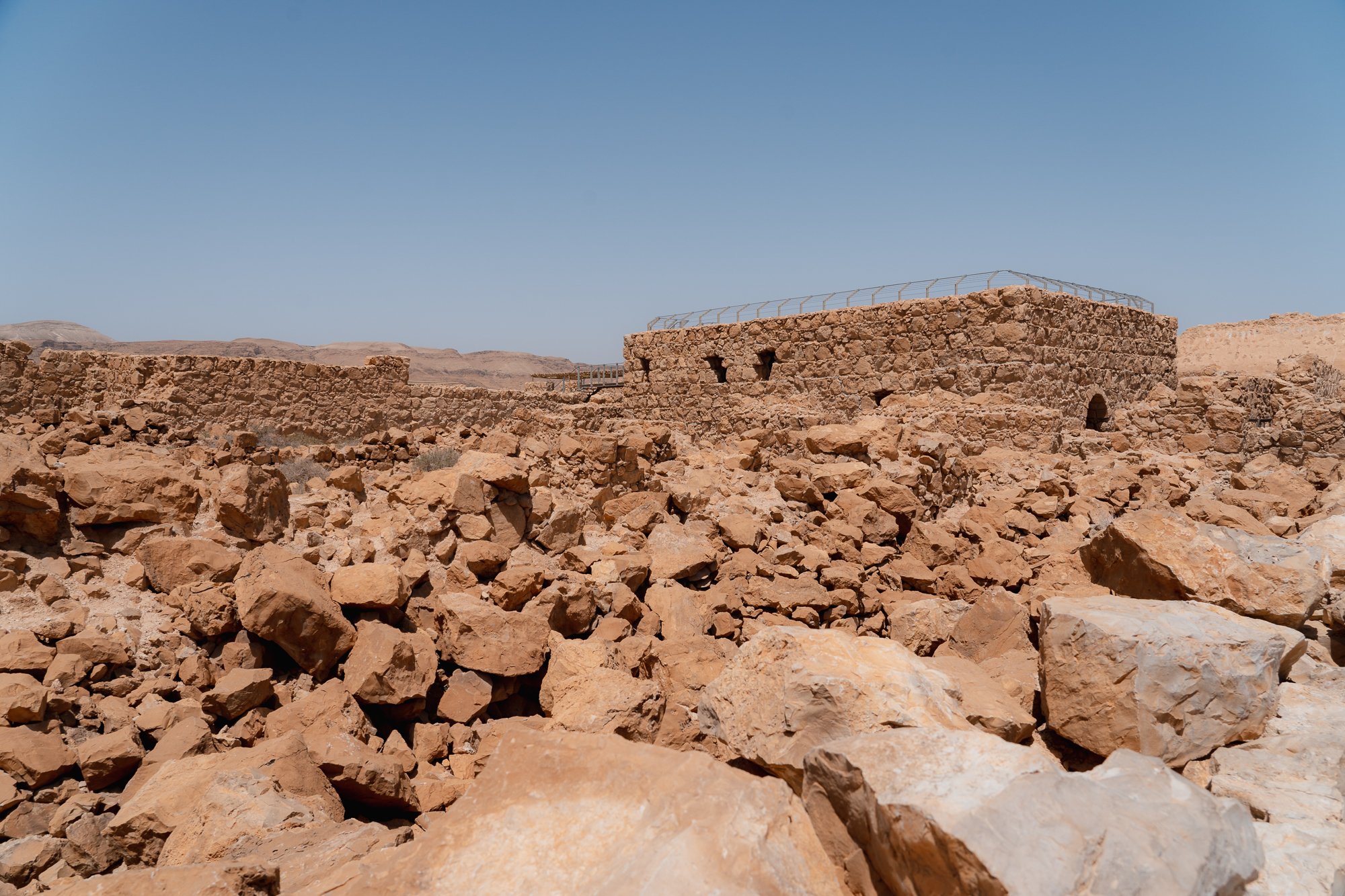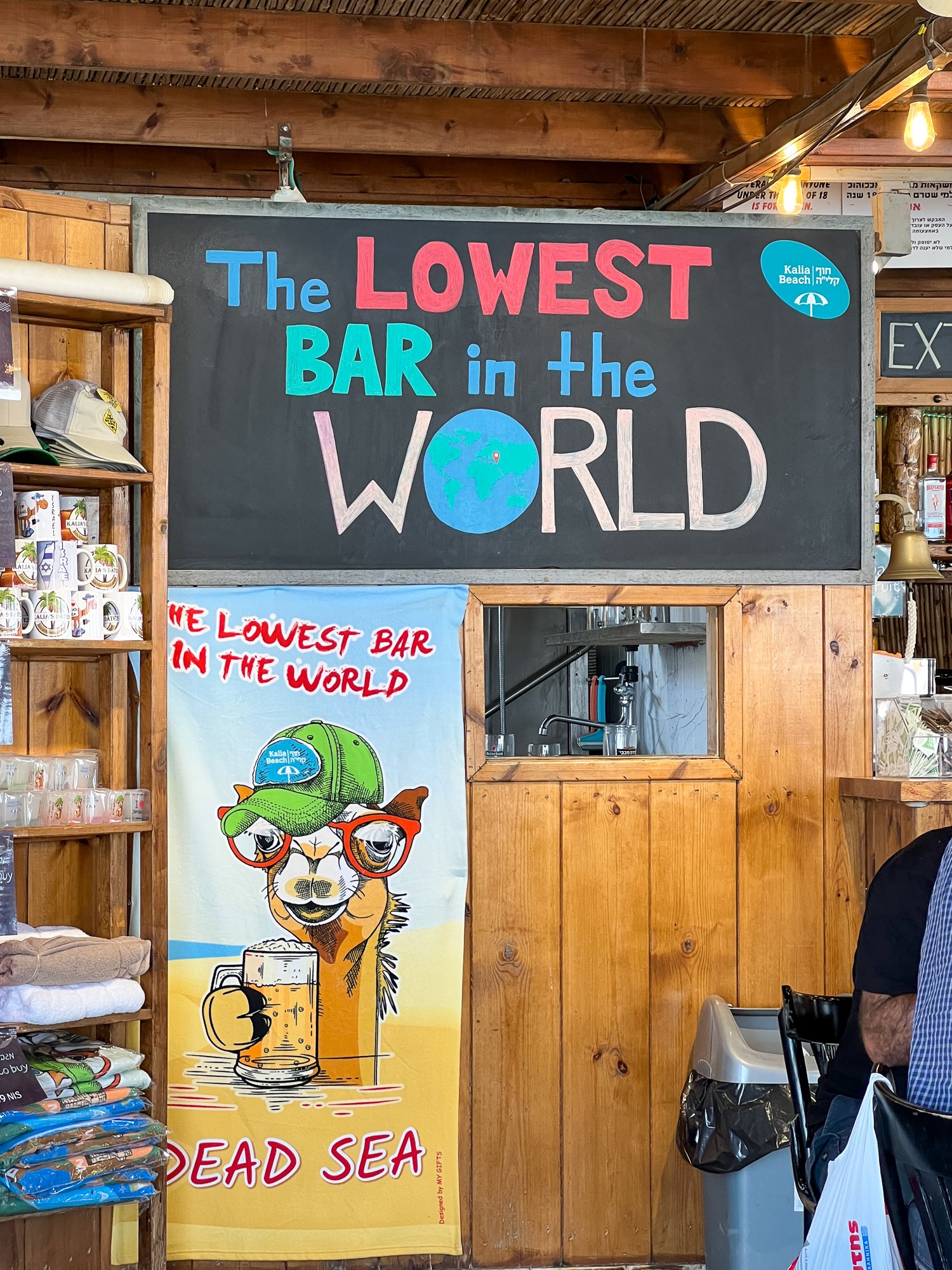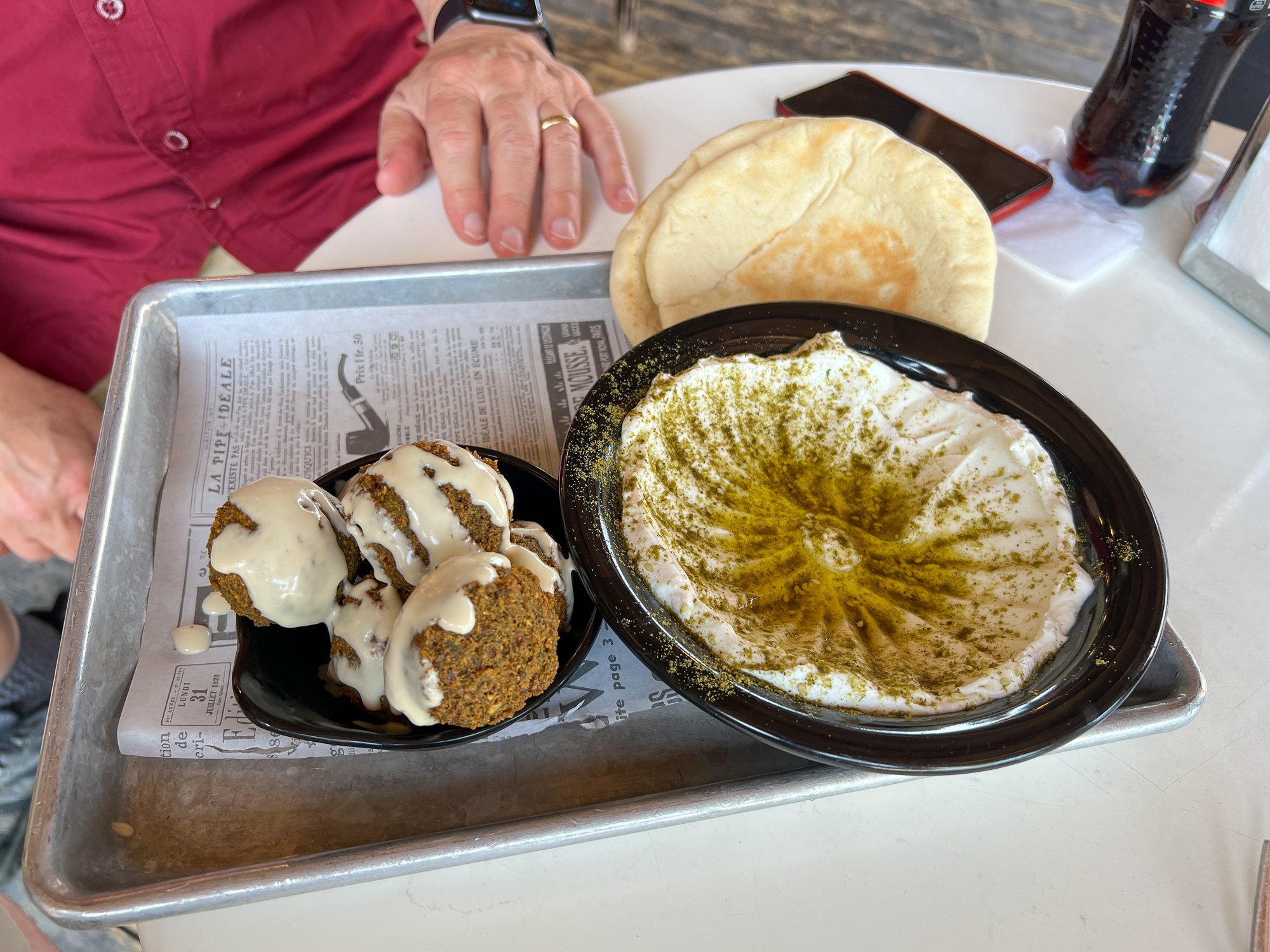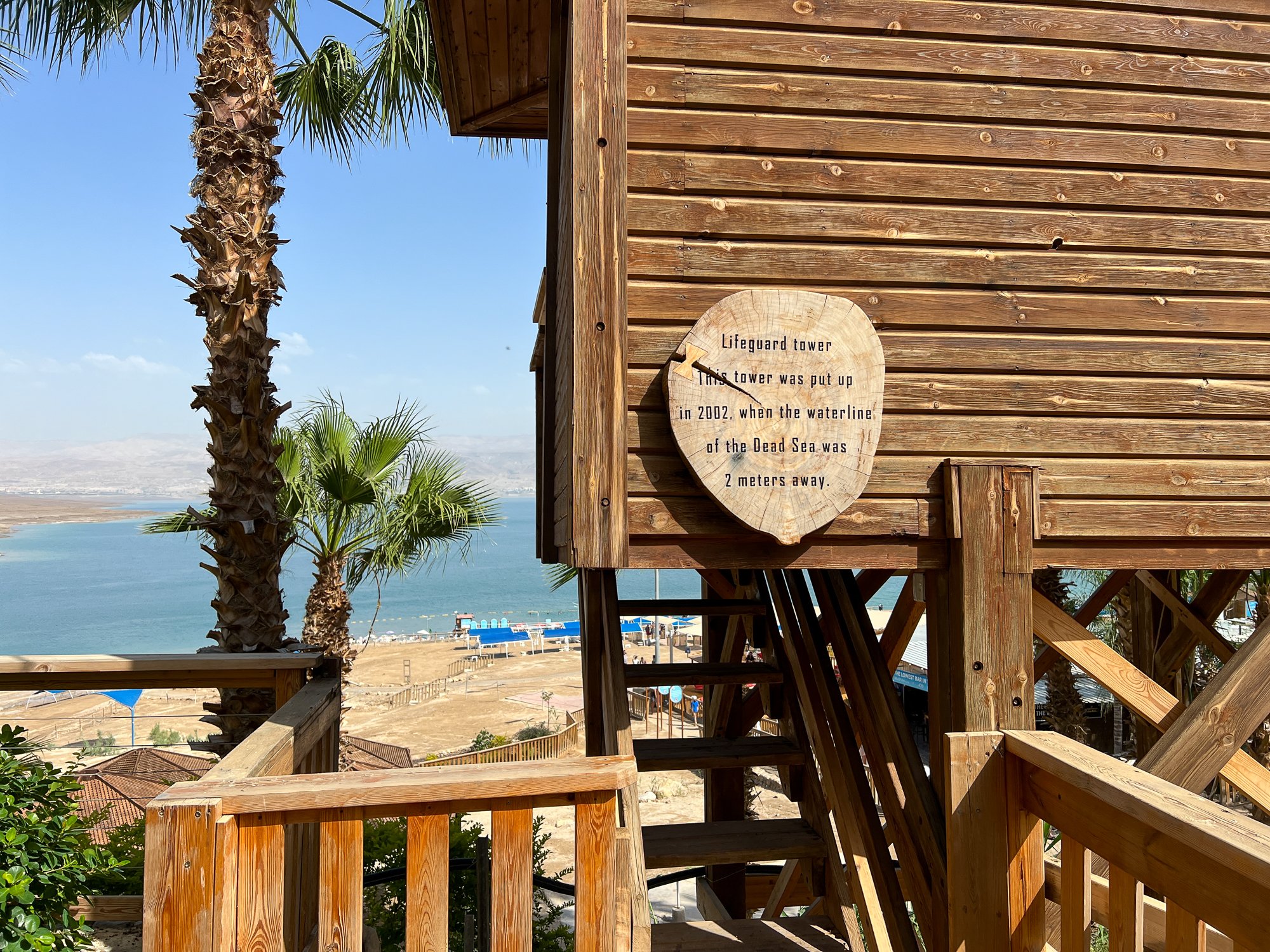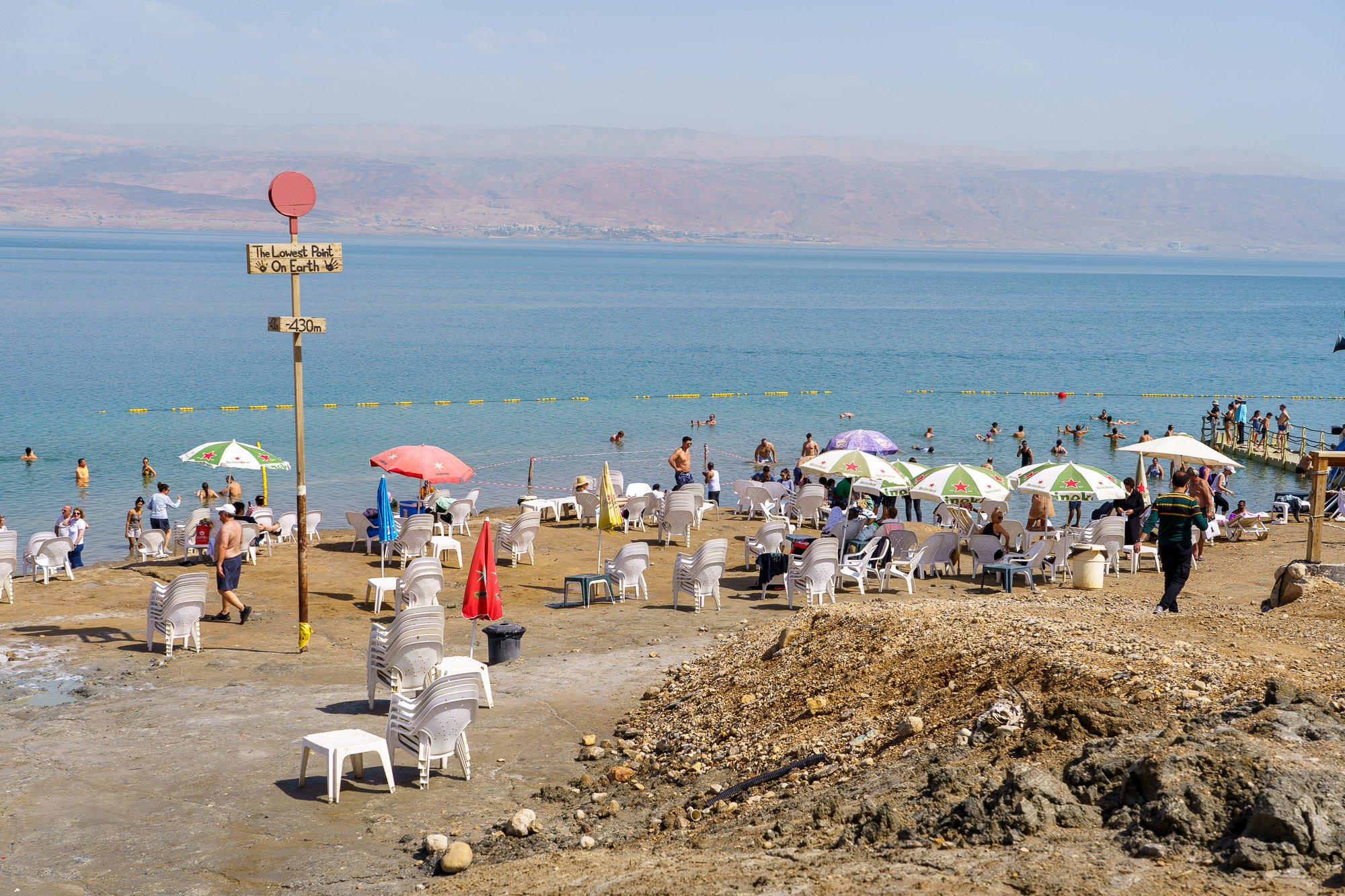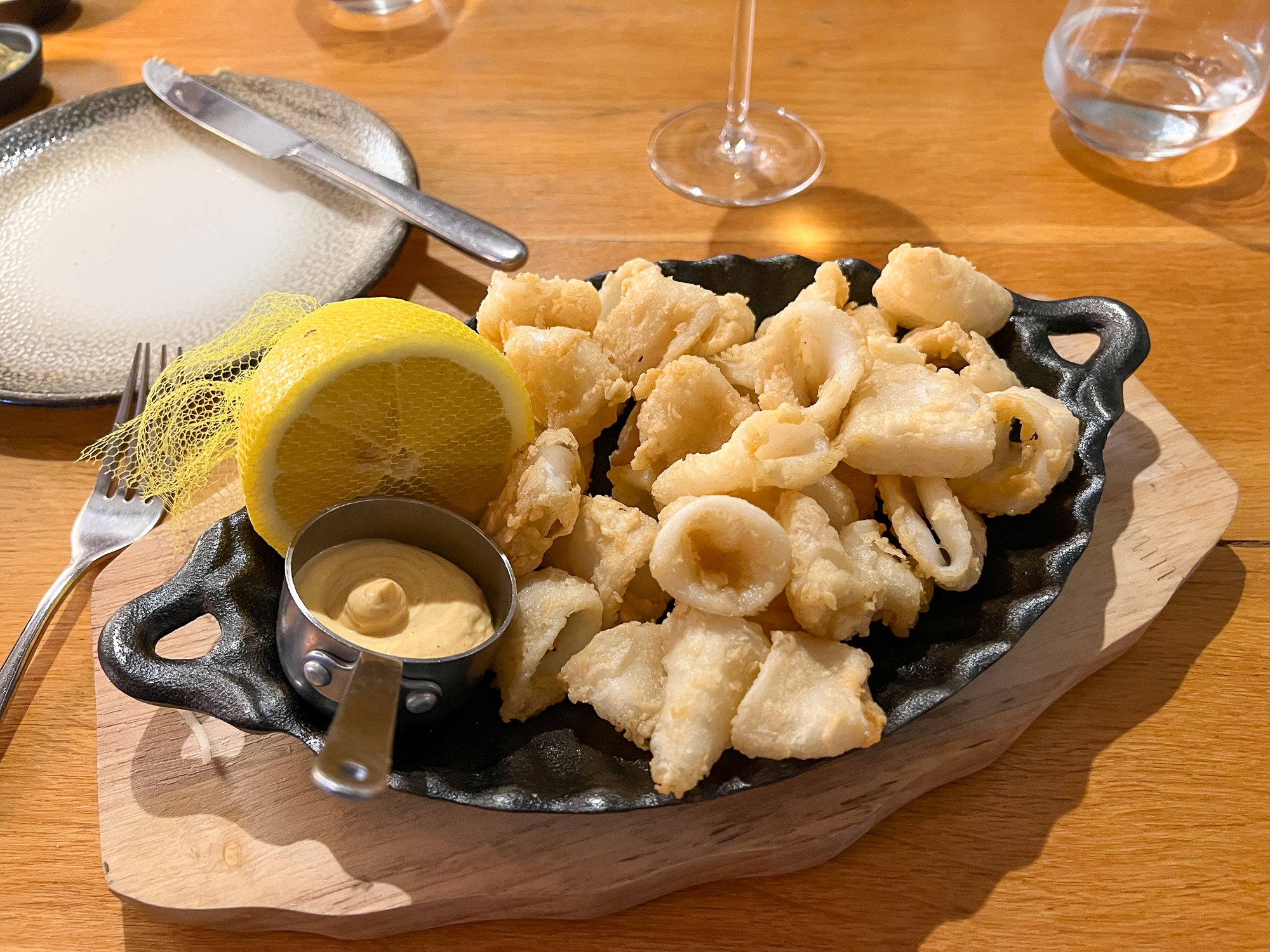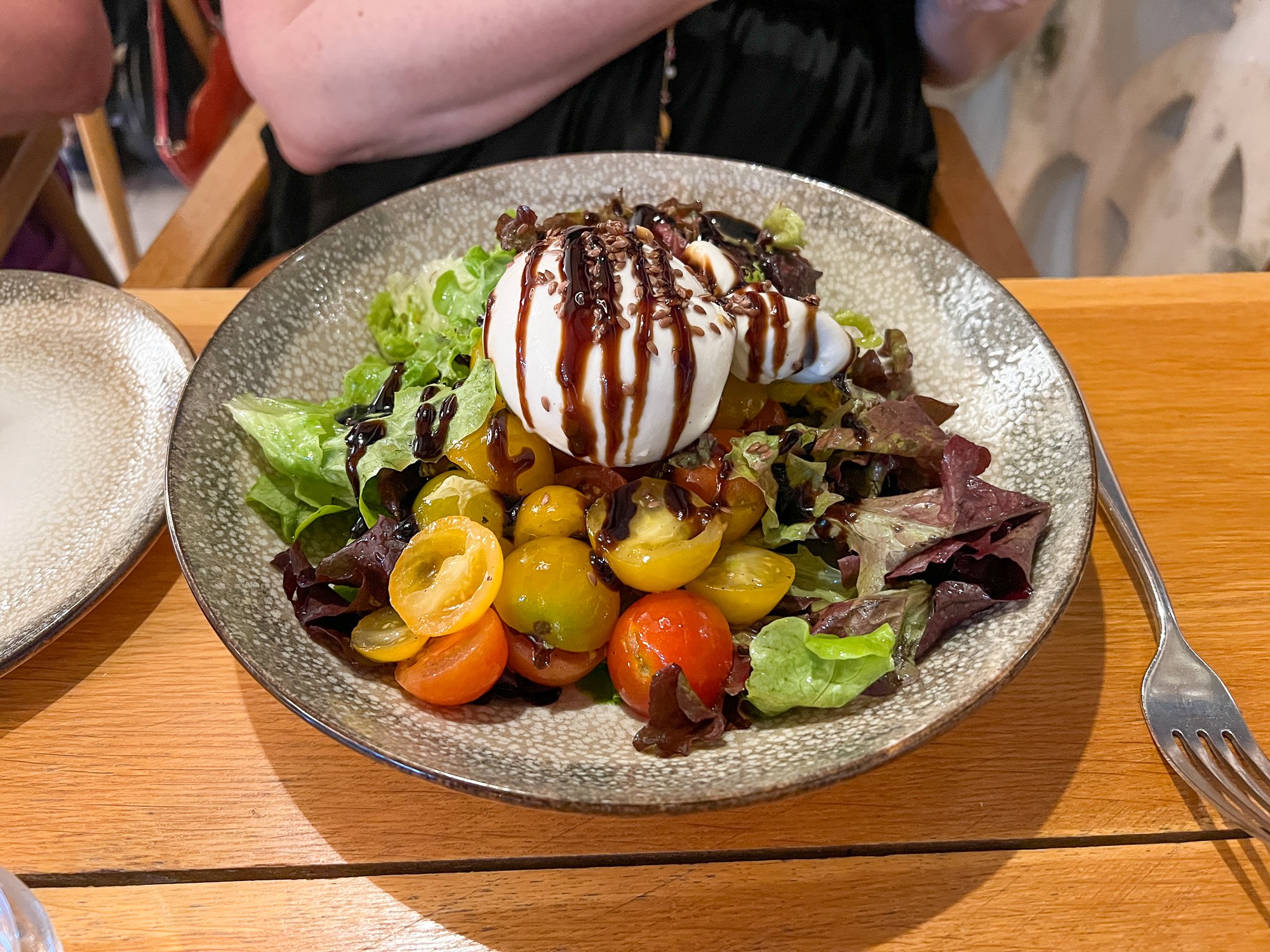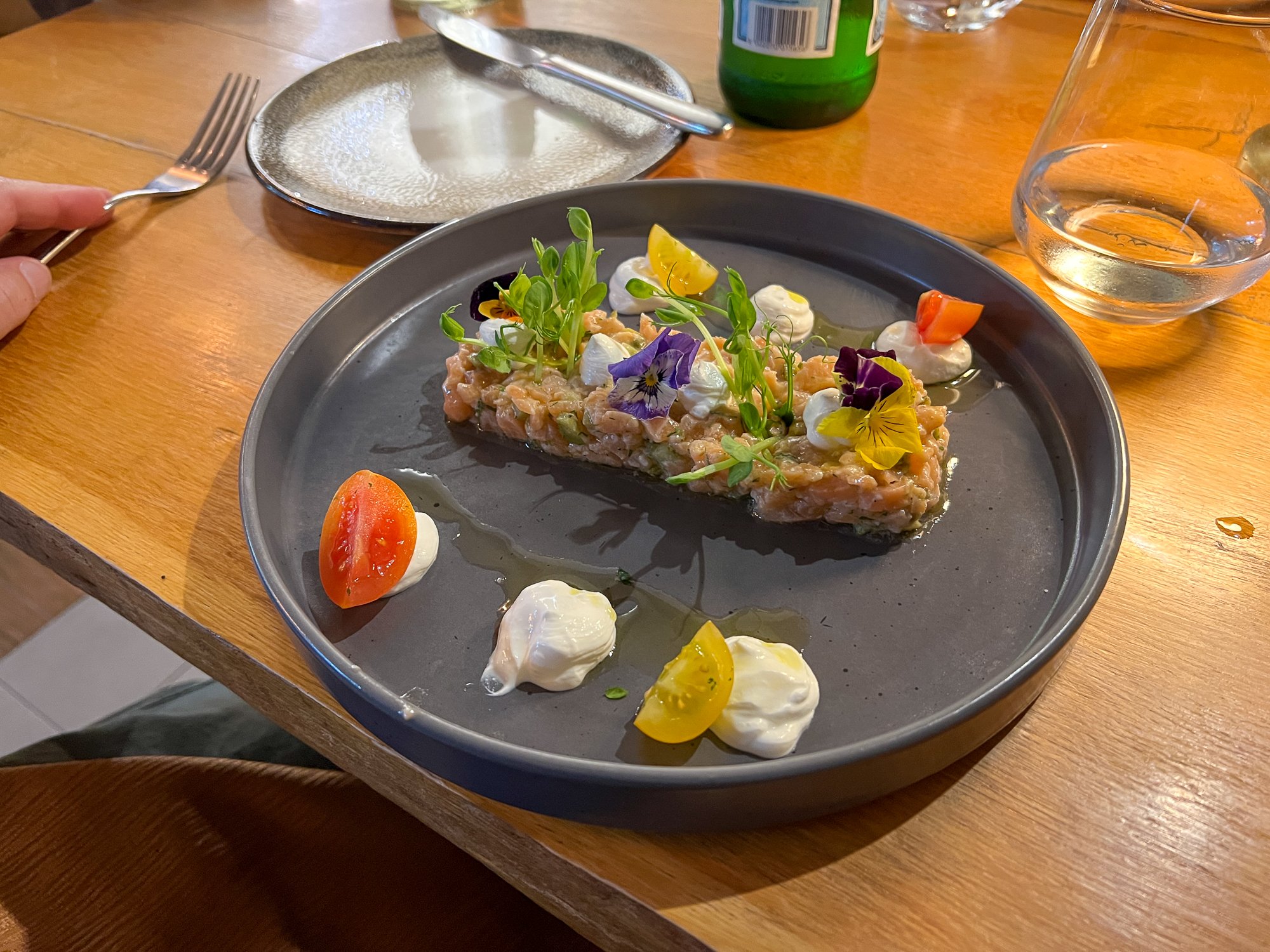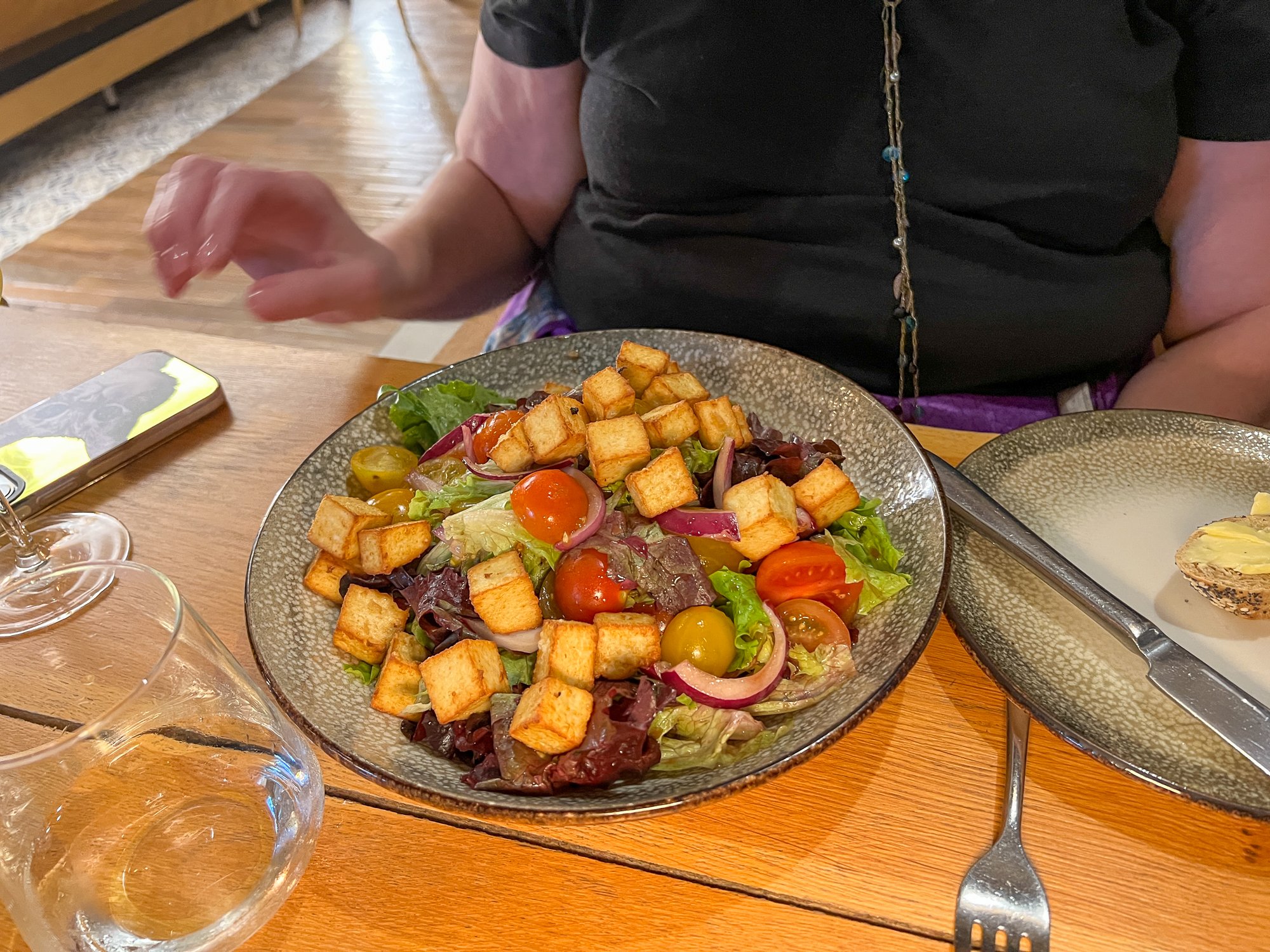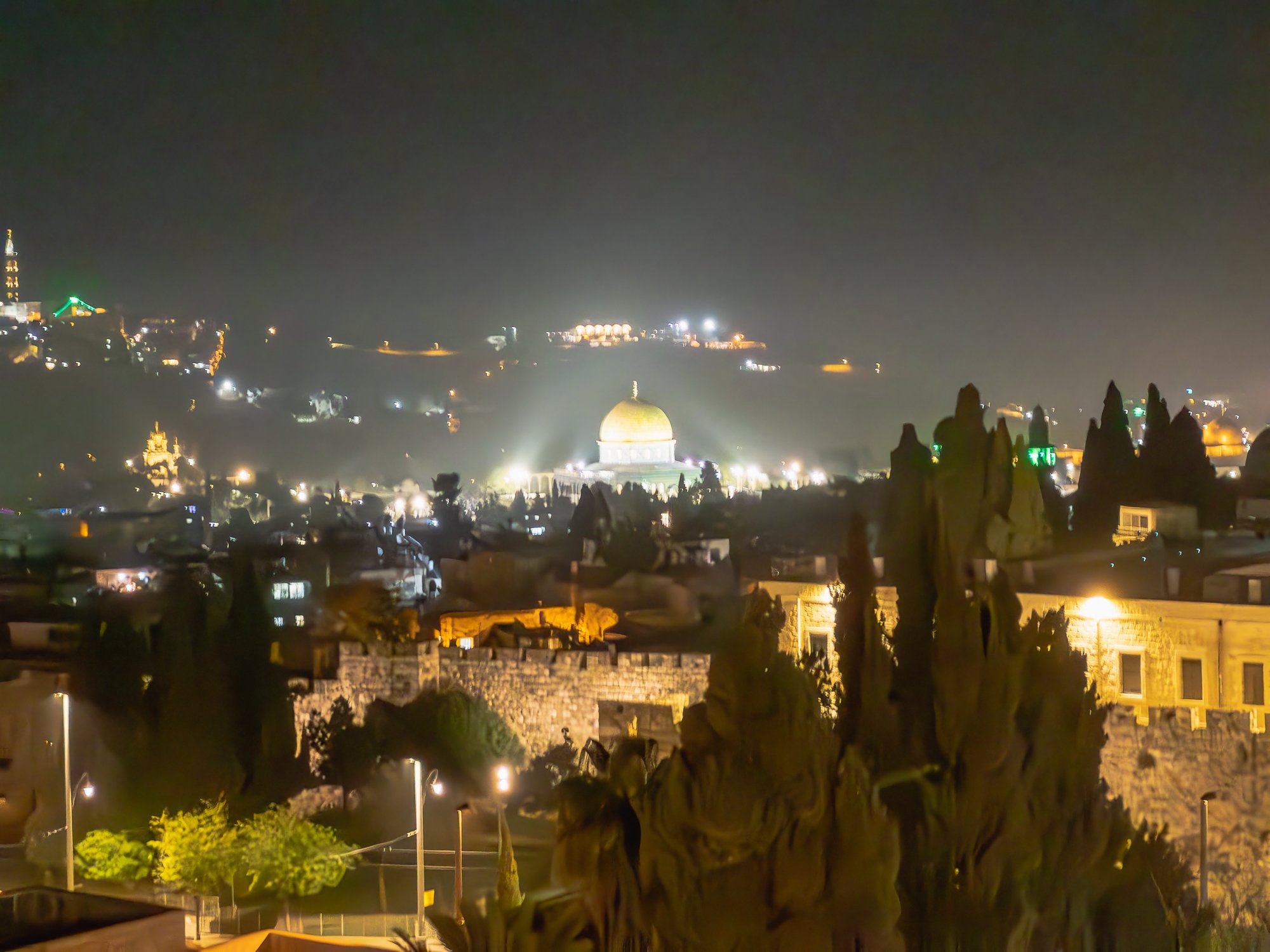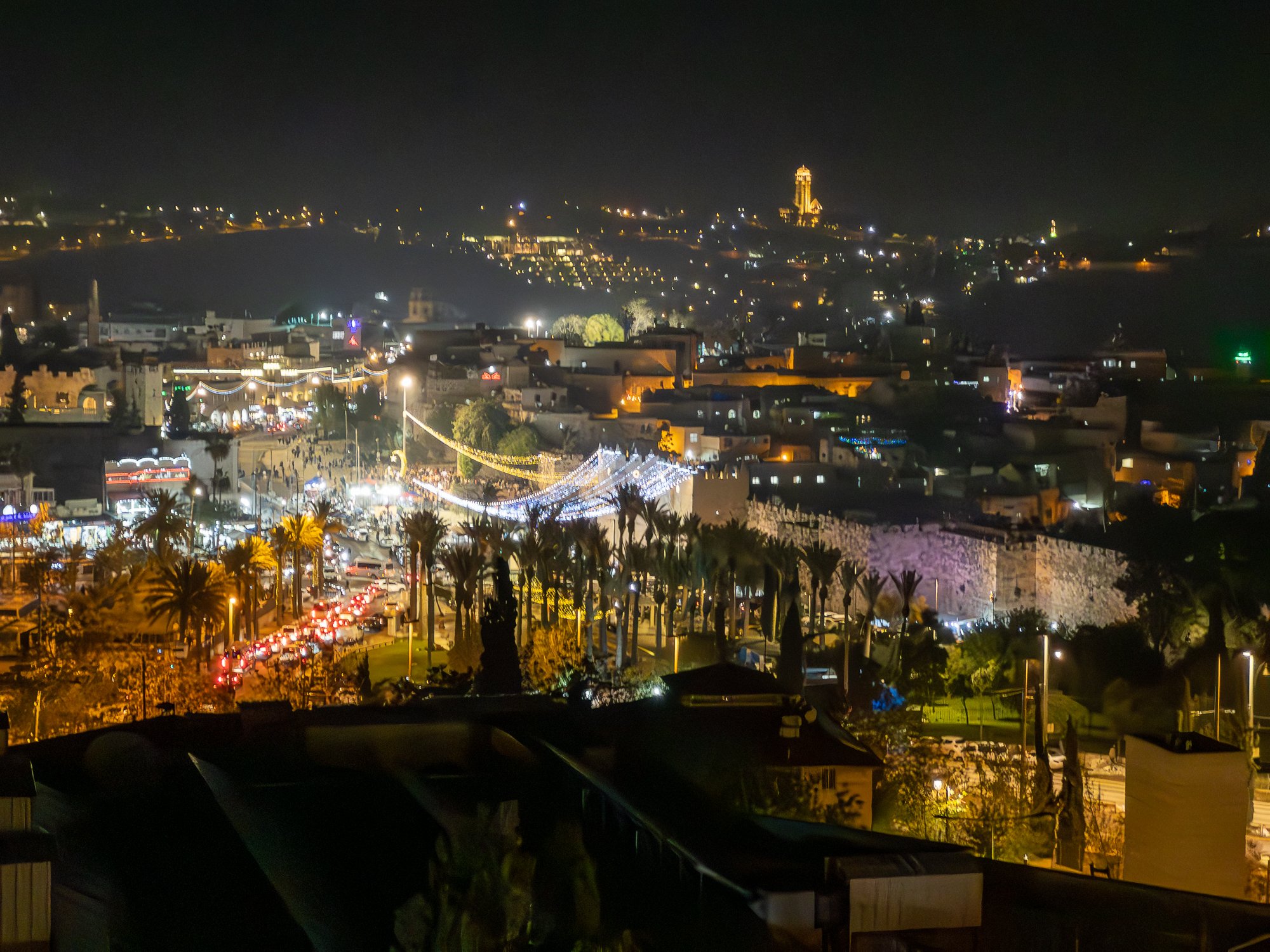Peaks and Valleys! (Literally)
Our jet lag makes getting up early somewhat tolerable! We had an appointment with a 7:15 tour bus that would pick us up at a hostel about 15 minutes away so we had to get moving. Our pilgrimage would not include a stop at a powerful site important to Israeli and Jewish history - Masada. (Our pilgrimage was about the lift of Jesus and Masada’s importance comes before and after the time of Christ.)
“Masada” means fortress. This Masada refers to a fortress and palace compound on a high mesa in the middle of the Judean desert. Herod the Great (Jewish monarch at the birth of Jesus) had built two palaces on top of the plateau overlooking the Dead Sea about 30 years before Christ. The compound became a siege site and fortress during the Jewish - Roman War in the 70s AD, which ended in the suicide of the remaining soldiers before Roman troops breached the fortress. The common interpretation is that soldiers chose their own death (forbidden by Torah) rather than submit to Roman tyranny. It is a site of Israeli national pride to this day.
Our tour would start at a nearby oasis, Ein Gedi, which is the largest in Israel and likely the place where David hid from King Saul when Saul sought to kill him. We would finish with a relaxing afternoon at the Dead Sea, the lowest point on Earth.
Leslie and Loren opted for a simpler day. They arranged for a driver to take them to Jaffa, a beautiful city on the Mediterranean, about an hour’s drive in the opposite direction. When presented the choice of blazing hot desert or cool Mediterranean breezes with shopping, churches, and cafes, the choice was obvious to Leslie. We might have been well served to go with them, though the tour was great and thought us a lot.
Saint George’s College recommended we use Abraham Tours. Their model is to basically provide transportation and context and then let you tour on your own using their app. This is our style, and it keeps the prices down, so we went with it. Foreshadowing: The person sitting in front of me sure coughed an awful lot . . .
The funky lobby of the Abraham Hostel, where we picked up our tour van.
Geography and Barriers
There is one major highway that leads East out of Jerusalem and connects with another major North/South route that parallels the Jordan River. We would be driving through Palestinian territory in the West Bank, so we had our first experience with a check point. We were in an Israeli registered van operated by an Israeli company so the checks were minimal. One soldier came on board, looked us over and waved. It would be a bit different for us later on.
The roadway continued to drop altitude as we moved East and South. We soon drove past Jericho, the oldest city in the world, and then the site of the Qumran caves where the Dead Sea Scrolls were recovered. All of these places are less than 30 minutes by car from Jerusalem. Israel is a small country!
Another 420 meters to go before we hit bottom!
It is also a geographically diverse country. As soon as we crossed over the hills from Jerusalem, we went from lush greenery to harsh desert wilderness. This is where Jesus spent his time in the desert after his baptism.
We saw many date plantations operated by both Israelis and Palestinians in the rich soil and the drive told us the story of the Dead Sea. Unfortunately, it is becoming an ecological disaster as it continues to dry up. Our drive said that the principal cause is not climate change, but the use of water from the Dead Sea by two companies, one in Jordanian and one Israeli. As the Dead Sea water levels lower, the ground dries up and massive sink holes emerged. We drove pasts the site of a hotel that had been swallowed up by a sink hole. Because of this, there are only a few locations considered safe for recreation by the Dead Sea, with signs warning you elsewhere that if you cross the barriers and get trapped, you may not be rescued because of the instability of the land.
Plans are in place to refill the Dead Sea by pumping water in from the Mediterranean and the Red Sea. While the plans have been approved, the funding has not! Also, the leases the two companies hold expire in a few years so they will not be renewed. Our driver grew up along the Dead Sea and was passionate about its recovery.
Ein Gedi
We stopped first at Ein Gedi to let the crowds dies down at Masada. This means Ein Gedi would be cooler and less crowded. Alas, it would mean the mesa in the middle of the desert, Masada, would be boiling, but oh well . . .
Ein Gedi is an oasis - a lovely area in the middle of the Judean wilderness with water runoff from the mountains. There are many trails and archeological sites. We would only have time to take one of the trails to a couple of waterfalls and see the cave where David hid out.
It was interesting to see how an oasis can bring such life and greenery in the middle of harsh wilderness. Unlike American deserts, which are rarely total wilderness, the Judean desert is absolutely lifeless without water.
We spent a little too much time enjoying the scenery so we made it to the first waterfall and then back. We had a conversation with a fellow tourist who was an Egyptian Christian veterinarian living in Vienna. He had come for the Holy Fire ceremony and to try to reconnect with God. He had a little of frustration with the Egyptian Coptic Church, which he saw as overwhelmingly authoritarian and clergy-centric. His best friend was an Austrian Lutheran pastor who showed him how to the read the Scriptures and made it all come alive for him. He was really wrestling with reconciling his past and present in faith and national allegiances. Something about us said “clergy” so he opened up. People come to the Holy Land with many stories, questions, and hopes looking for meaning. It made me think of the tile mosaic we saw showing Jerusalem as the place where the world meets.
Masada
Left to my own devices, we would have gotten to Masada early in the morning for better light for photos and more time to explore. Instead, we arrived just before lunch. It is still impressive! The orientation video is actually excerpts from the Masada miniseries with Peter O’Toole. Apparently they were so historically accurate, that it stands the test of time.
Visitors can clim the 2,000 feet to the top by a trail that is about a 45 minute hike, or they can take the five minute aerial tram. We did not have much time, and the heat was such, that the tram won.
The Masada plateau contains dozens of ruins, some in better shape than others. It was a major military outpost and royal palace until its Roman defeat. Then it became a Byzantine monastery and church. In the modern era, the British copied the Masada defensive strategy to protect against Nazi advances by Erwin Rommel. It has also been the site of swearing-in of Israeli Defense Force members.
From the top, you can see the Dead Sea and the Judean wilderness. You can also look down and see remains of the Roman siege, which lasted for three years until they finally broke through.
After we made our circuit, we went back down for a quick bite to eat and the final stop on our tour, the Dead Sea.
The Dead Sea
After Masada, we headed back north to Kalia Beach to enjoy the Dead Sea.
Everybody wants to float in the Dead Sea! Except us. Admittedly, it seems like fun and there are many health benefits, but our feline personalities kicked in and we weren’t too keen on the hassle it would take. Because of the high salt content, the water can really sting if you have any skin issues (which Jim does). You also have to shower and change afterward to avoid damage to swimwear or skin.
There are also safety instructions - swallowing the water can cause death, basically internal mummification, because of the saline. You can only float on your back. If you roll over, you risk drowning because of the difficulty of turning over again due to the buoyancy. Twenty minutes is also the maximum recommended time without a break, due to the risk of dehydration. The water is VERY warm!
We opted instead to enjoy a snack and beverage at the lowest bar in the world (420 meters below sea level!) and a bit of window-shopping at the stalls.
The resort also had a marker showing how far the water had receded in the past twenty years. Yikes!! Quite frankly, it was a lovely time. The resort was very relaxing, and the food very good and not badly priced for a tourist site. When everyone was finished, we got on the best and headed back, returning to the hotel in time to get ready for dinner.
Dinner and a View!
One of Jerusalem’s top restaurants (literally) is a wine and cheese bar on the roof of Notre Dame, a Roman Catholic pilgrimage hotel across from the Old City. They have a full menu, so we booked dinner there to enjoy the eve of our move to Saint George’s for the official start of the pilgrimage the next day. Great food and great views!




